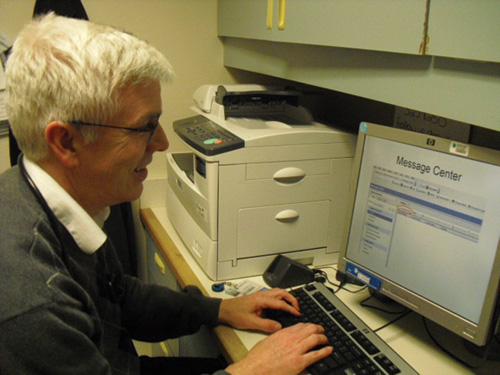Message center enhances doctor-to-doctor communication


Timothy Hennessy, M.D., has an early morning question about a patient’s heart medication but hesitates to call the patient’s cardiologist. So, he logs into Christiana Care’s Computerized Provider Order Entry/PowerChart 2012 tools for physicians, goes to the message center, selects “communicate” and sends a message to the cardiologist, who responds several hours later.
Dr. Hennessy is a general internist who also works as a hospitalist. Several times each week, he uses the system to reach out to another internist or a specialist. He makes inquiries such as, “Would the patient benefit from another day in the hospital?” Or “How can we help a patient who is having trouble sleeping?”
Technology makes it easier to communicate, he says. But e-mail, text messaging and mobile phones also have fragmented the way people, including doctors, communicate.
“When doctors use different kinds of technology to communicate, it can actually make it difficult to know how to get in touch with a colleague,” Dr. Hennessy says.
The message center is part of Christiana Care’s transformation to an integrated electronic health record, says Janice Nevin, M.D., MPH, chief medical officer. Working with one, streamlined system that is solely for physicians benefits doctors because there is a central location for messages and a mechanism for quick response.
Dr. Hennessy acknowledges that not all doctors are enthusiastic about yet another mechanism for communication. But he has used the system frequently and finds it extremely useful.
The message center offers an additional advantage in that messages are secure, ensuring patients’ privacy. All messages are purged from the system after 60 days and are not part of the permanent record.
“Since the message is compliant with HIPAA, it allows for a freer exchange of information,” Dr. Hennessy says.
The system can be accessed remotely, and exchanges typically take only a few seconds. The patient’s name automatically pops up in the message header.
Dr. Hennessy says the message center nurtures collaboration and can help to build relationships between primary care physicians and specialists.
“The more doctors talk to each other about their patients, the better the patient care will be,” he says.